Stepan Dmitrievich Erzya (real name - Nefedov) is a famous Russian sculptor, thanks to whom the whole world learned about the existence of one Mordovian tribe. The article provides a brief overview of his life and work.
The origin of the sculptor
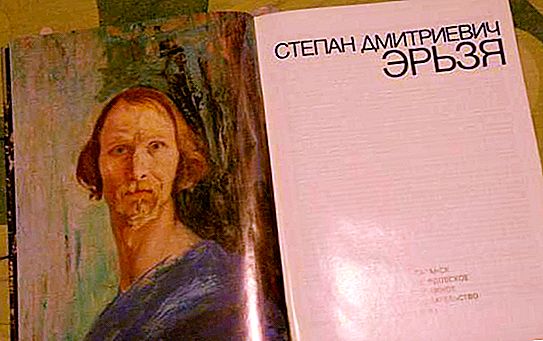
Stepan Dmitrievich Erzya was born in the Ardatovsky district of Mordovia (the village of Baevo) on October 27, 1876. His parents were peasants belonging to the Mordovian Erzya tribe (hence the pseudonym of the sculptor). In this tribe, pagan beliefs persisted in the 19th century. It is known that Erzya honored the souls of rivers, springs and stones, worshiped sacred trees. Nevertheless, Stepan himself was Orthodox, and already in the 3rd generation.
Period of study
The future sculptor began an independent life at the age of 14. Over the next 10 years, Stepan Dmitrievich Erzya was engaged in various crafts, including the painting of temples. Only having returned to his parents in the city of Alatyr, where they had moved by then, Stepan began to engage in what became his real vocation. Local merchants praised the scenery that he made for an amateur performance based on the work of A.S. Pushkin. They decided to show the drawings of Stepan Dmitrievich to the director of the Stroganov School in Moscow.
In 1901, with almost no command of the Russian language, Erzya went to study in Moscow. Having studied for a year at the Stroganov School, where he attended evening drawing classes, Stepan Dmitrievich Erzya was able to enter the Moscow School of Painting, Sculpture and Architecture. During the year, Erzya was preparing to become a painter, but then decided to go to the sculpture department. It was easy for him to study. Erzya Stepan Dmitrievich quickly mastered the craft of the sculptor due to his natural talent. His teacher was S. M. Volnukhin, who is known as the author of the monument to Ivan Fedorov, the Russian first printer. Stepan had friendly relations with his teacher. Erzya helped him after the revolution. He took the sick Volnukhin south, trying to save him. However, his teacher died in his arms. The work of the representative of impressionism P.P. Trubetskoy also had a great influence on the formation of the future sculptor.
Erzya Stepan Dmitrievich did not finish the course. He considered that he had received everything he could at the school. In 1906, he went to Italy. It was here that he finally began to call himself Erzey, believing that he thereby declared the world about his people. It should be noted that he responded to this nickname before, and sometimes signed his student work with the surname Nefedov-Erzya.
Work done in Italy
Inspired by the work of Michelangelo, Erzya began to work in marble. In Italy, he quickly mastered the necessary skills. The sculptor chopped his creations immediately in stone. He did not pre-prepare projects or sketches. It should be noted that few craftsmen worked using the direct carving technique. Usually they resorted to the services of assistants. At present, not many Erzi works relating to this period have been preserved. Among these sculptures, it is necessary to note the statue of John the Baptist. This work was done for the Temple of La Spezia.
First big success
In 1909, the first resounding success came to Stepan Dmitrievich. It was then that at the eighth international exhibition in Venice, Erzi’s composition was demonstrated, entitled “The Last Night of the Condemned Before the Execution”. Stepan Dmitrievich created this work after visiting the Butyrskaya prison in Moscow. I must say that during the years of apprenticeship the sculptor we were interested in moonlighting as a photographer. At this time, shot the revolutionaries who were arrested, Erzya Stepan Dmitrievich.
A brief biography of the master does not imply a detailed acquaintance with his work. However, it is necessary to say a few words about “The Last Night of the Convict before the Execution”, since this is a very important work. Stepan Dmitrievich portrayed a seated half-naked man who was painfully trying to realize what was soon to come. In this figure, a resemblance to the author is guessed, which is typical for a number of works of the master of interest to us.
I must say that this sculpture made a great impression on the exhibition. Erzyu immediately began to be called nothing more than "Russian Rodin." Interestingly, shortly before the exhibition, the work that was supposed to be presented at it was spoiled. Stepan Dmitrievich had to restore the sculpture in just 4 days. The whereabouts of this concrete work are currently unknown. There are only her reproduction.
Relocation to France
Stepan Dmitrievich Erzya, whose sculptures by that time were already well-known abroad, moved to France in 1910. His exhibitions in Munich, Nice and Milan had great success. The museum in Nice acquired his works, they were bought by private collectors. In Paris in 1913, Erzya Stepan Dmitrievich held his first solo exhibition. His biography at that time was marked by the creation of a number of sculptural portraits made to order. This gave a significant income to the master. Stepan Dmitrievich Erzya, whose work was in great demand, remembered the plastic model immediately. Therefore, he carried out orders very quickly - one or two sessions were enough.
Female portraits
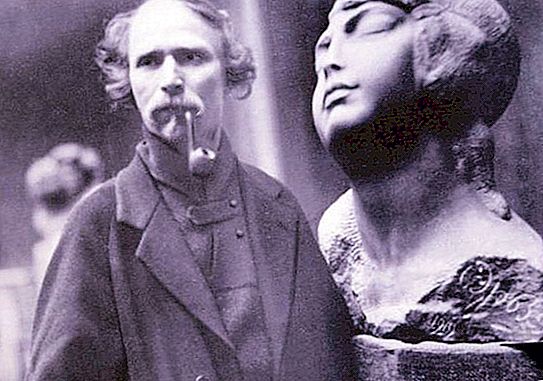
Stepan Dmitrievich in 1912 created a portrait of his beloved woman, Martha. This sculptural image (graceful inclination of the head, a mysterious half-smile), as well as special modeling techniques (contrastingly smoothed face, textured massive hair) will be repeated in many female portraits in the artist’s future work. In the work "Norwegian Woman", created in 1914, the sculptor with great skill conveyed the difficult state of mind of the heroine, a not very beautiful and not very young woman. She experiences either happiness or suffering.
Return to Russia
Erzya in 1914 returned to Russia. S. T. Konenkov became his neighbor, which significantly influenced the further work of the master. Stepan Dmitrievich, mobilized during the First World War, was under the command of Dr. G. O. Suteev. Erzya served as a nurse. The doctor, under whose head was Stepan Dmitrievich, recorded his stories, full of extraordinary adventures, about his life abroad. These stories were subsequently published.
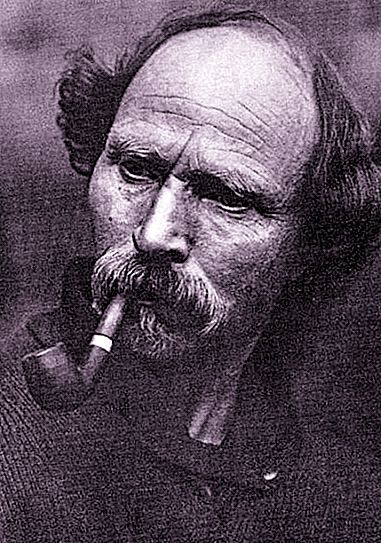
Returning to his homeland, the sculptor created works not only in marble. Erzya also used materials that are considered unusual in easel sculpture (reinforced concrete, cement). In addition, the artist used concrete with metal shavings. Erzya first worked in a tree. This was facilitated by his friendship with Konenkov, who was a famous master in the creation of wooden sculpture. The choice of material was also influenced by children's impressions, which Stepan Dmitrievich received, admiring the works of Mordovian folk masters who performed wood sculptures.
Trip to the Urals
Marble has always remained Erzya's favorite material. Stepan Dmitrievich even went to the Urals in search of rare types of marble. This trip dates back to the period from 1918 to 1921. At this time, the sculptor had to endure all the hardships of the harsh post-revolutionary time and the ensuing civil war.
"Eve"
"Eve" is Erzya's famous work, completed in 1919. The biblical ancestress is carved from marble. She appears before us in the image of a village puffy young woman, naive and erotic at the same time. This sculpture echoes the creations of the masters of Art Nouveau. The extinction of this style refers to the period of the formation of Erzi as a sculptor.
Post-war years
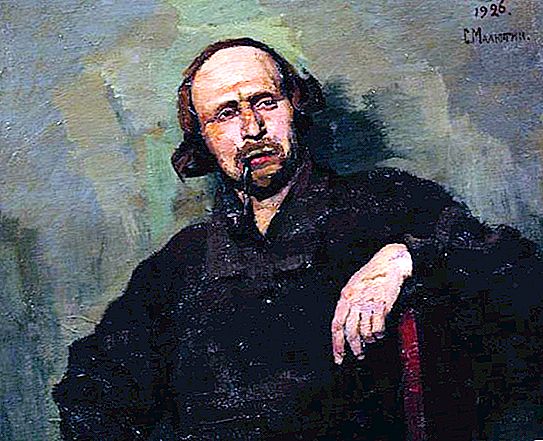
Stepan Dmitrievich in the first years after the war lived in Yekaterinburg, as well as in Moscow, Batumi, Novorossiysk, Baku. The master taught, took part in events held by the new government. Erzya in 1922 completed portraits of Akaki Tsereteli, Shota Rustaveli, Ilya Chavchavadze. He also created the following works: "Leda and the Swan", "Motherhood", "Flying". All these creations are made of wood. The artist also created decorative works to order. Most of them have not been preserved. Among these works, it is worth noting the monuments to Karl Marx and Liberty in Yekaterinburg. Both of them are made of cement and belong to 1920. Among the surviving works of this time are frankly weak, such as the House of Unions in Baku. It is felt that Erzya did not possess these forms. The sculptor Stepan Dmitrievich Erzya also made the heads and busts of Lenin.
Argentine period of creativity
The artist in 1925 became a member of the Society of Russian sculptors. The next year he went to France with his exhibition, after which he decided not to return to his homeland. Erzya settled in Argentina because European countries did not want to accept the “red sculptor”. Thus began a new fruitful stage in the life of such an artist as Stepan Dmitrievich Erzya.
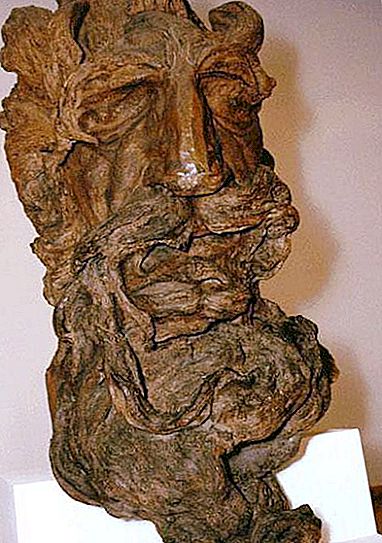
The Argentine period greatly influenced the creative originality of the master. Stepan Dmitrievich, having moved to this country, settled in a small house located on the outskirts of Buenos Aires. Erzya regularly exhibited his works at local exhibitions, published a brochure with information about them at his own expense. During this period, the only material for Erzya was Algarrobo and Quebracho wood, which grows exclusively in South American forests. This material is exceptionally hard, so he demanded from Stepan Dmitrievich hard, painstaking work. The artist used flows, growths, tree roots, connecting the necessary pieces with glue. In 1932 he performed the head mask "Moses" (pictured above) Stepan Dmitrievich Erzya. The Argentine period is also the time for the creation of sculptural portraits of his father and mother, Leo Tolstoy (in 1930). In 1944, the artist completed the work "Man." Erzya also created many portraits of young beauties.




